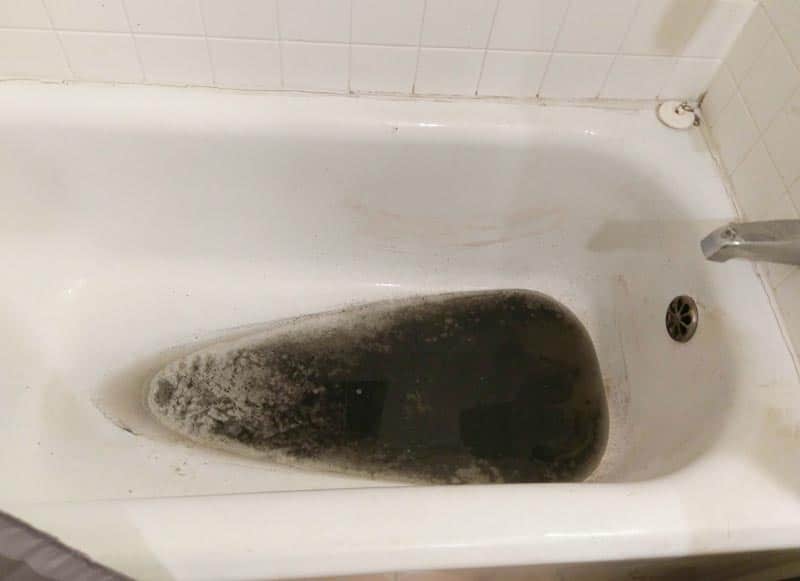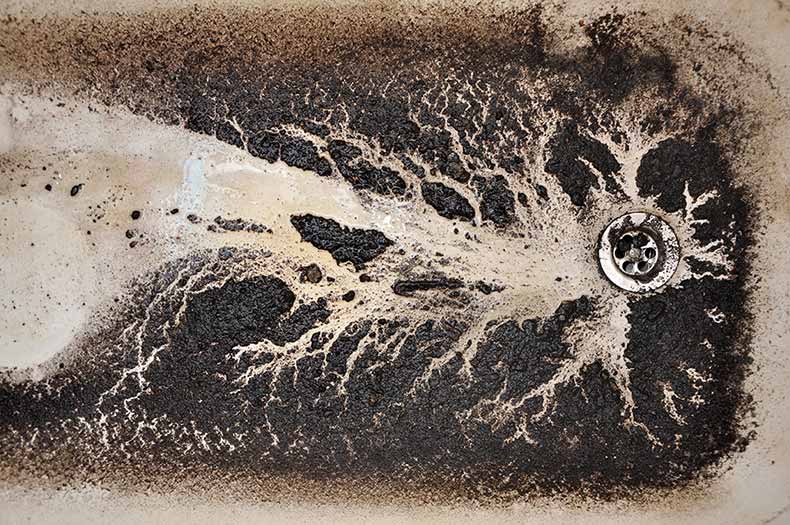How do you feel on the subject of Why sewage is coming up through your bathtub?

Sewage backup in the bath tub can be a traumatic and unsanitary trouble for any type of homeowner. Not only is it bothersome, but it likewise postures significant wellness risks and shows underlying concerns with the plumbing system. Recognizing why sewage is coming up through the bath tub is essential for taking suitable action to deal with the problem properly.
Intro to the Concern
Comprehending the Issue
When sewage starts backing up into the bathtub, it's a clear indication of a problem with the water drainage system. The wastewater that ought to be flowing away from your home is rather locating its way back right into your space, which can lead to substantial damage and carcinogen.
Potential Reasons
Several aspects can add to sewer back-up in the bath tub. From clogs in the drain line to problems with the plumbing infrastructure, identifying the root cause is important for finding a solution.
Common Factors for Sewage Back-up
Obstructions in the Sewer Line
One of the most typical root causes of sewage backup is an obstruction in the drain line. This can happen due to the buildup of particles, oil, or foreign items in the pipelines, avoiding appropriate flow and creating sewage to support right into your bathtub.
Tree Root Invasion
Tree roots looking for dampness and nutrients can infiltrate sewer lines via little splits or joints. With time, these roots can expand and expand, causing considerable damages to the pipelines and causing sewer back-up problems.
Aging Facilities
Older homes might have outdated plumbing systems that are extra susceptible to rust, splits, and wear and tear. As pipelines age, they become much more prone to leaks and obstructions, boosting the chance of sewer backup incidents.
Heavy Rainfall or Flooding
Throughout periods of heavy rainfall or flooding, the sewer system may end up being overwhelmed with excess water, triggering back-ups and overflows. This can lead to sewer supporting right into bath tubs and other components inside the home.
Health And Wellness Threats Related To Sewage Back-up
Contamination of Water Supply
Sewage back-up can contaminate the water system in your house, positioning a severe health danger to you and your household. Direct exposure to polluted water can lead to intestinal concerns, skin infections, and other illnesses.
Spread of Illness
Sewer has hazardous microorganisms, infections, and bloodsuckers that can create a range of conditions, consisting of hepatitis, cholera, and gastroenteritis. Entering into contact with sewage or contaminated surfaces puts you in jeopardy of infection.
Mold and mildew Growth
Wetness from sewage backup can create perfect conditions for mold and mildew growth in your home. Mold and mildew spores can intensify respiratory troubles and create allergic reactions in sensitive individuals, making punctual cleanup necessary.
Indicators of Sewage Backup
Foul Odors
Undesirable smells originating from drains or components, specifically in the restroom, may show sewage back-up issues. These smells are usually solid and persistent, signifying an issue that needs immediate interest.
Slow Draining Fixtures
Tubs, sinks, and commodes that drain pipes gradually or otherwise in any way could be experiencing sewage back-up. If several fixtures are affected at the same time, it's most likely that the concern stems from a common factor, such as the major sewer line.
Gurgling Sounds
Odd gurgling or bubbling noises originating from drains when water is running somewhere else in the house are indicative of air caught in the plumbing system. This air buildup can result from sewage back-up and need to be checked out quickly.
Immediate Actions to Take
Switching Off Water Supply
In case of sewage back-up, it's important to switch off the water to prevent additional contamination and damages. Locate the major water shutoff valve in your home and shut it off till the problem can be fixed.
Getting In Touch With a Specialist Plumber
Taking care of sewer backup is not a DIY task. Call a certified plumber with experience in managing sewage-related concerns to analyze the situation and perform required repair services or clean-ups.
Avoiding Contact with Infected Water
Up until the sewage back-up is resolved, stay clear of contact with contaminated water to stop the spread of microorganisms and microorganisms. Use protective gear if you have to be in the damaged location and wash your hands extensively afterward.
Safety nets
Routine Maintenance of Drain Lines
Arrange routine inspections and maintenance of your sewage system lines to recognize and resolve possible concerns before they intensify right into significant issues. This can include cleaning out particles, examining for tree origin breach, and repairing any type of broken pipes.
Mounting Backwater Valves
Take into consideration installing bayou shutoffs in your plumbing system to prevent sewage from flowing back into your home throughout durations of heavy rainfall or flooding. These valves automatically close when water draws back up, protecting your home from contamination.
Correct Disposal of Family Waste
Stay clear of flushing anything other than bathroom tissue and human waste down the commode to prevent clogs and blockages in the sewer line. Dispose of grease, oil, and various other household chemicals effectively to reduce the risk of plumbing problems.
Cleaning Up After Sewer Backup
Disinfection Procedures
Thoroughly disinfect and disinfect influenced locations after sewage back-up to eliminate dangerous germs and avoid mold development. Usage appropriate cleansing items and safety gear to guarantee risk-free and effective clean-up.
Repair of Influenced Areas
Fix any damages to floor covering, wall surfaces, or components triggered by sewage back-up. Depending on the level of the damage, you might require to replace carpeting, drywall, or various other materials to recover your home to its pre-loss condition.
Why Is Water Backing Up in My Bathtub When I Flush My Toilet?
What to do about a sewer line clog
First, don’t bother with plunging. No amount of plunging will dislodge the clog in a sewer line. The clog is too far away. Plungers are for clogs in the toilet itself, not the sewer line. Plus, the most likely causes of a sewer clog are:
Tree roots Flushed toys or feminine products Grease buildup Those items don’t move easily. And in the case of tree roots, the roots need to be cut out of the pipe and the pipe will need to be repaired.
You’ll need a closet auger. A closet auger is a type of plumber’s snake with a protective cover to keep from scratching the delicate porcelain toilet. If the clog is further down, you may need to remove the toilet or use one of your cleanouts to get to the clog.
We also recommend doing a video inspection of the drain to ensure that the cause of the clog has been completely removed. Otherwise, you could have the same problem again in a few days or weeks.
https://mspplumbingheatingair.com/blog/why-is-water-backing-up-in-my-bathtub-when-i-flush-my-toilet

Do you appreciate reading up on ? Place a remark further down. We'd be glad to listen to your thinking about this blog entry. Hoping that you come back again soon. Feel free to take a moment to share this content if you liked it. We value reading our article about Why is There Sewage Coming Up Through the Bathtub.
Call Today